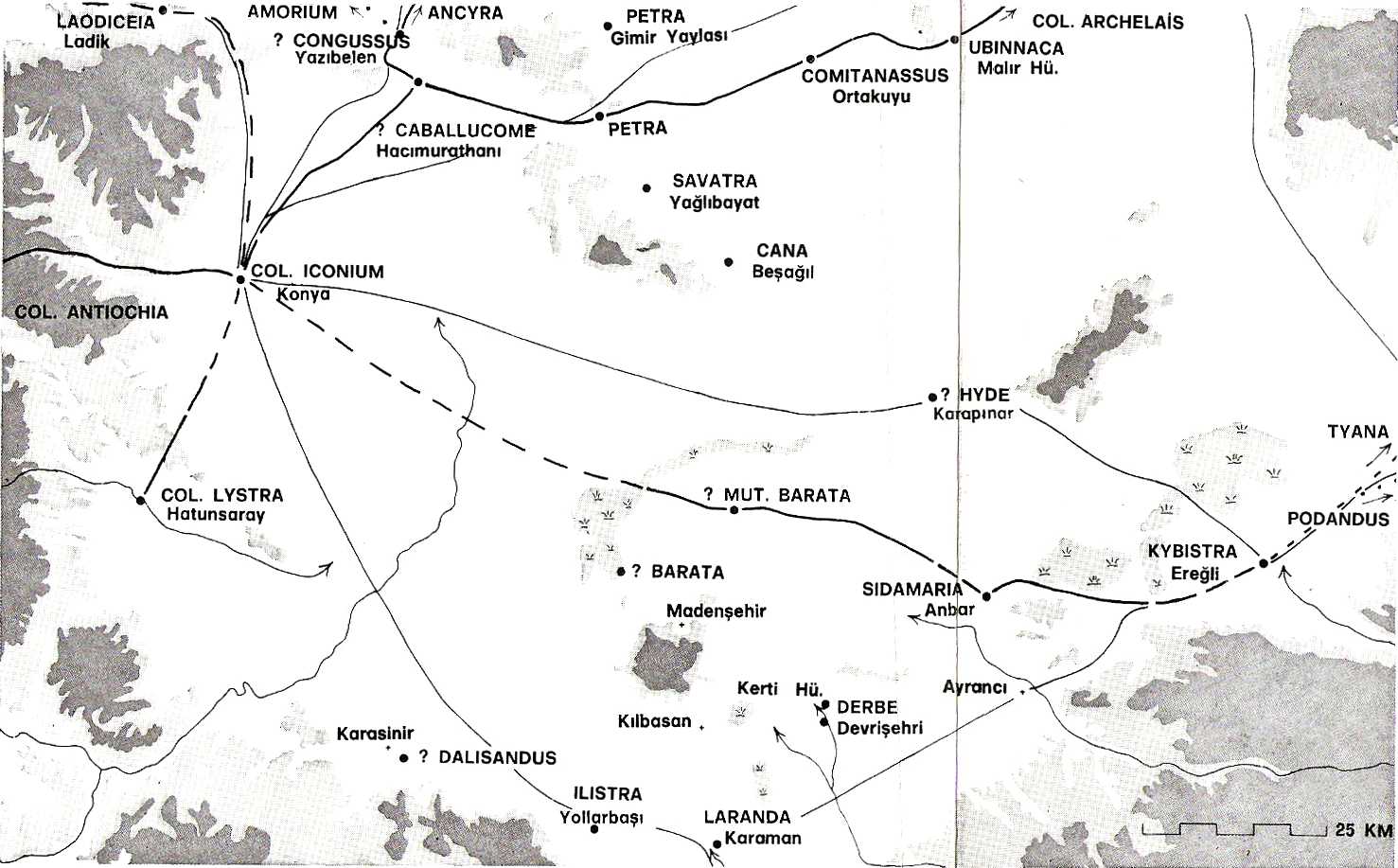Collection of Greek Coins of
Lycaonia - Isauria / Λυκαονία - Ισαύρια

Guillaume Sanson / Mortier 1676

Ex Hans von Aulock, Münzen und Städte Lykaoniens, 1976

Ex H.Kiepert, Atlas antiquus, Berlin, Reimer, ca. 1875 AD



|
The Lycaonians appear
to have been in early times to a great extent independent of the
Persian empire, and were like their neighbors the Isaurians a wild and
lawless race of freebooters; but their country was traversed by one of
the great natural lines of high road through Asia Minor, from Sardis
and Ephesus to the Cilician gates, and a few considerable towns grew up
along or near this line. The most important was Iconium, in the most
fertile spot in the country, of which it was always regarded by the
Romans as the capital, although ethnologically it was Phrygian. It is
still called Konya, and it was the capital of the Seljuk Turkish empire
for several centuries. A little farther north, immediately on the
frontier of Phrygia, stood Laodicea Combusta (Ladik), surnamed
Combusta, to distinguish it from the Phrygian city of that name; and in
the south, near the foot of Mount Taurus, was Laranda, now called
Karaman, which has given name to the province of Karamania. Derbe and
Lystra, which appear from the Acts of the Apostles to have been
considerable towns, were between Iconium and Laranda. There were many
other towns, which became bishoprics in Byzantine times. Lycaonia was
Christianized very early; and its ecclesiastical system was more
completely organized in its final form during the 4th century than that
of any other region of Asia Minor.
After the defeat of
Antiochus the Great, Lycaonia was given by the Romans to Eumenes II,
king of Pergamon. About 160 BC, part of it, the Tetrarchy of Lycaonia,
was added to Galatia; and in 129 BC the eastern half (usually called
during the following 200 years Lycaonia proper) was given to Cappadocia
as an eleventh strategia. In the readjustment of the Provinciae, 64 BC,
by Pompey after the Mithridatic Wars, he gave the northern part of the
tetrarchy to Galatia and the eastern part of the eleventh strategia to
Cappadocia. The remainder was attached to Cilicia. Its administration
and grouping changed often under the Romans. In 371, Lycaonia was first
formed into a separate province.
The ancient coinage of Lycaonia is quite limited. Judging from the number of types/issues known, coins appear to have been struck sporadically and perhaps mostly for prestige or some important occasion (like a visit by the Emperor). The Lycaonians appear to have retained a distinct nationality in the time of Strabo, but their ethnical affinities are unknown. The mention of the Lycaonian language in the Acts of the Apostles (14:11) shows that the native language was spoken by the common people at Lystra about 50; and probably it was only later and under Christian influence that Greek took its place. It is notable though that in the Acts of the Apostles Barnabas was called Zeus, and Paul was thought to be Hermes by Lycaonians, and this makes some other researchers to believe that Lycaonian language was actually a Greek dialect, the remnant of which can still be found in the Cappadocian Greek language which is classified as a distinct Greek dialect. [Wikipedia] |
Barata /
Βάρατα 
Dalisandus /
Δαλίσανδος
Derbe / Δέρβη

Iconium /
Ικόνιον 
Ilistra / Ιλιστρα
Isaura / Ισαυρα
Laodicea Combusta / Λαοδίκεια Κεκαυμένα
Laranda / Λάρανδα
Lystra / Λύστρα
Savatra / Σαυάτρα 